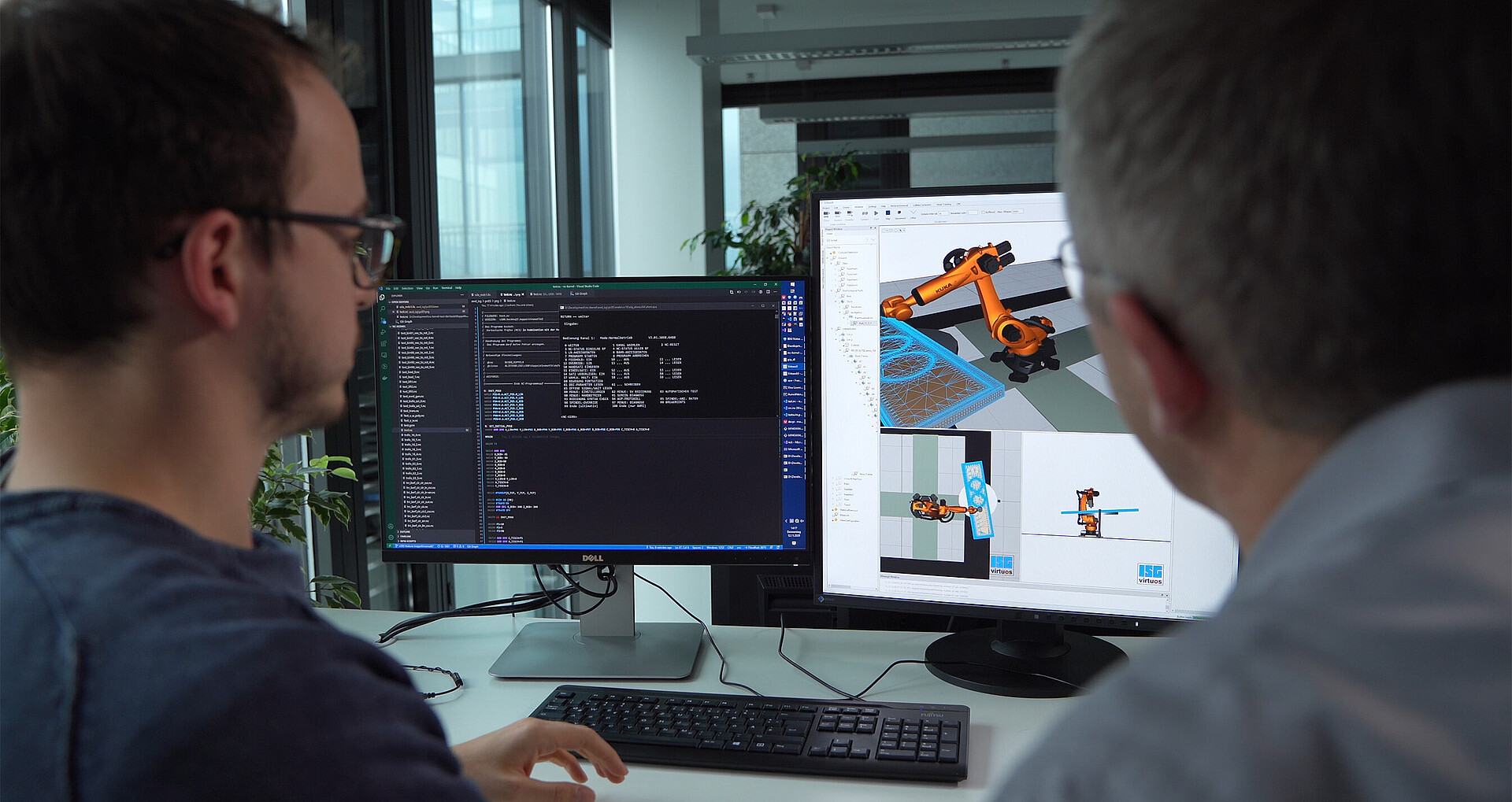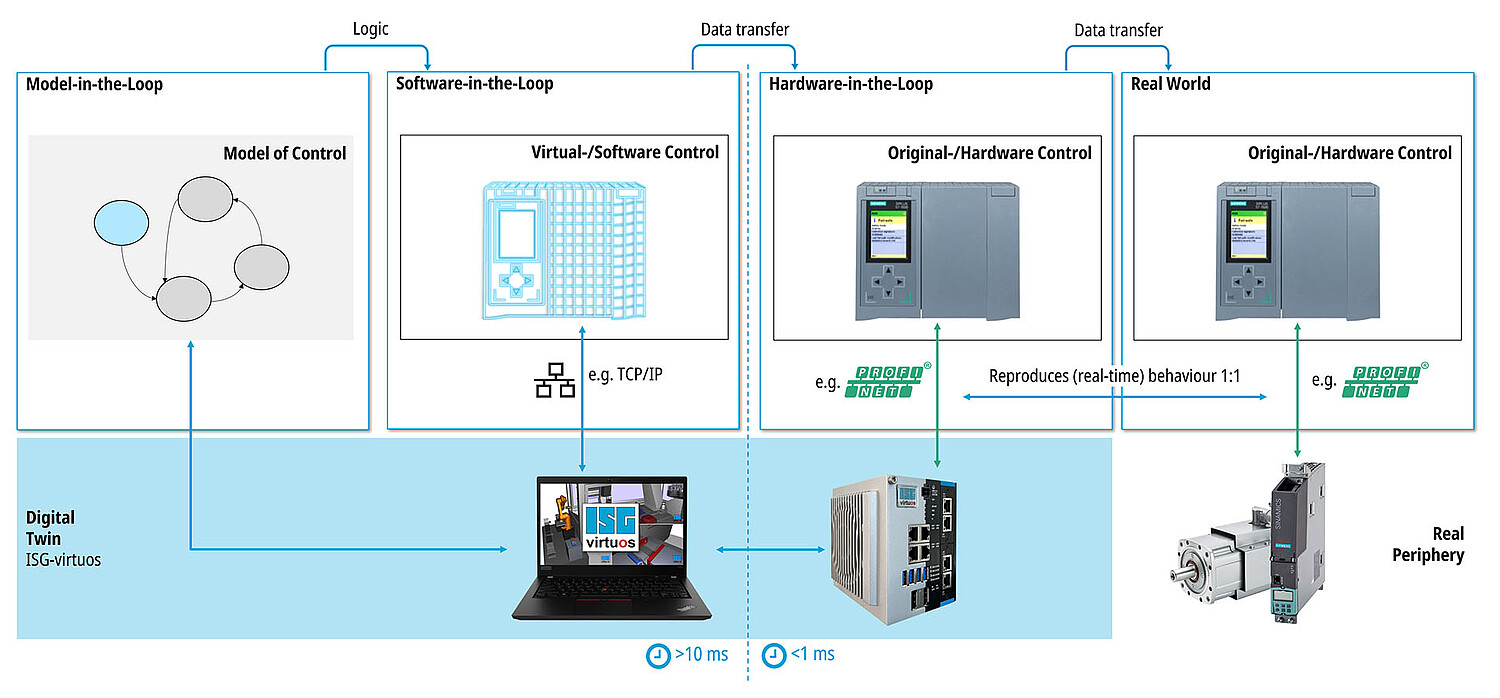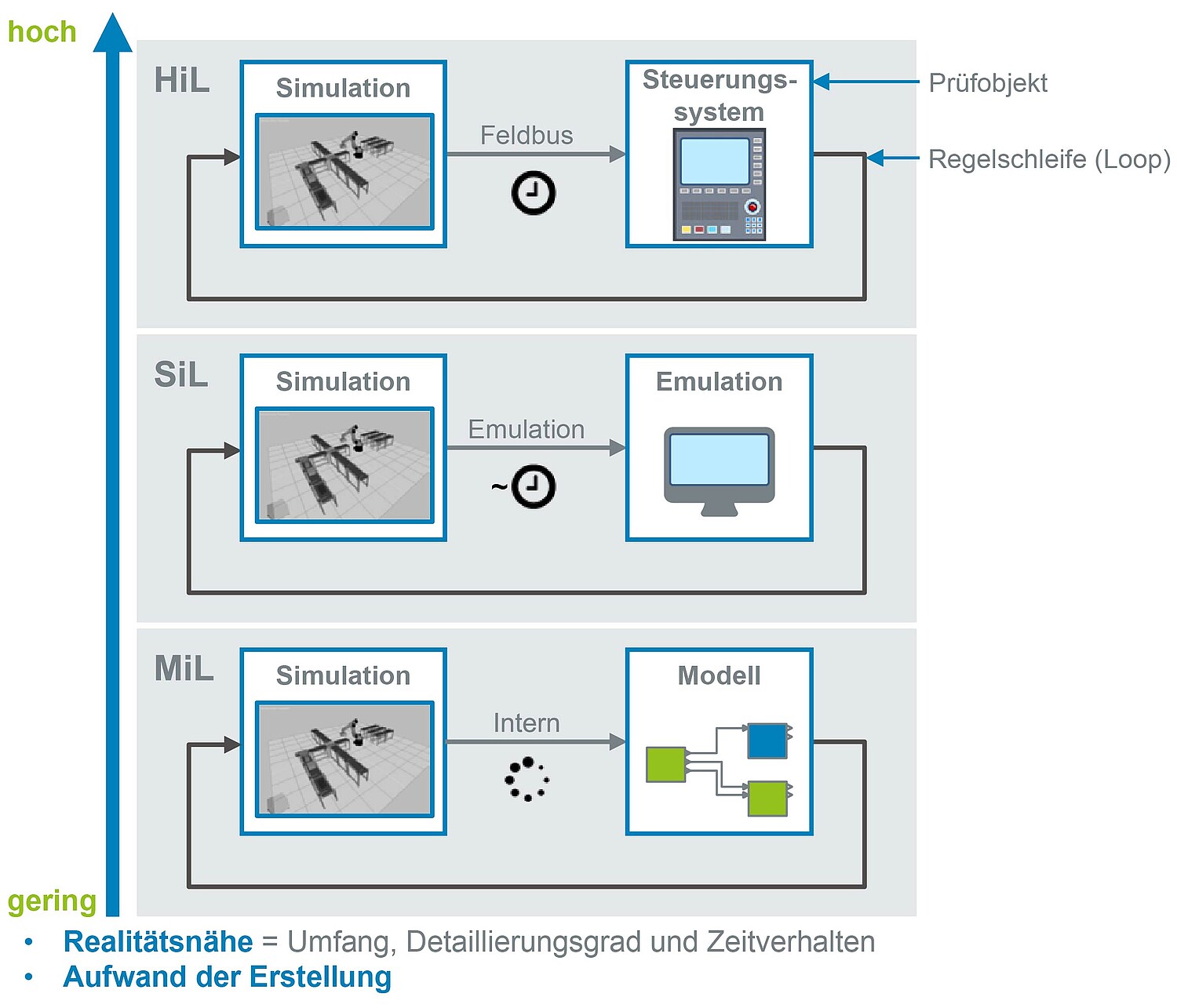Model-in-the-Loop Simulation with ISG-virtuos
With our simulation platform ISG-virtuos, it is already possible to build MiL scenarios with borad means in order to validate process concepts of your machines and plants already in an early phase without a connected controller. For this purpose, the control logic is simulated in ISG-virtuos with the help of our logic libraries, lookup tables, state graphs or manual control elements of the individual components in order to be able to perform initial tests.
Typical use cases are:
- Reachability studies of robot systems
- Collision checks
- First tests of the material flow
- Verification of the logical production flow of a plant
- Illustration of a plant in distribution


